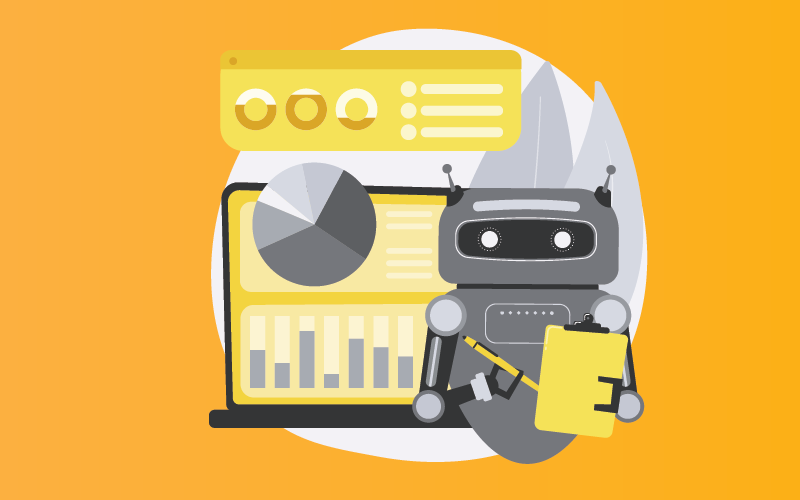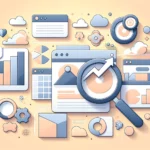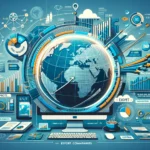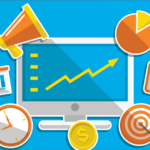Predictive analytics and machine learning are two different big data tools utilized in a business. Predictive analytics is often used when you have tons of data, whereas machine learning is typically deployed when you only have small amounts of information.
Machine learning has a lot of applications, and predictive analytics is useful for forecasting individual variables and scenarios. If you combine these two together, you’ll be on your way to success!
Predictive analytics and machine learning are both methods of examining data that help companies make better decisions. They use past & current data to predict future outcomes and can help in everything from business strategy to marketing. Machine learning is where computers teach themselves, while predictive analytics is the science of looking at trends and predicting future outcomes.
Machine learning algorithms are able to tackle different problems by taking in data and doing what is best. This helps them optimize how they function, which can then take their performance to a new level. Fraud, spam filtering, malware, detection, and image analysis are just some of the applications it’s been benefitting from in recent years.
Predictive analytics and machine learning are powerful things for companies that have massive amounts of data to leverage.
Here’s an overview of predictive analytics that may help you get started with this fascinating new technology.
- Which also includes:
- Predictive analytics typically use historical data, whereas machine learning is more conducive to scenario-based analysis
- Here are five ways that predictive analytics can benefit your business; use cases you may not have thought of: Star Trek Enterprises, The Real Estate Network, Hotelopia, Retail Reality
- Descriptive analytics identify patterns in data whereas prescriptive analytics offer predictions. Predictive analytics are used to predict future events that have not happened yet.
Here is a brief definition of each term with their chief differences followed by their use cases in the enterprise and the benefits and challenges they present.
What is predictive analytics?
Predictive analytics can be conducted by first conducting descriptive and diagnostic analytics, then combining that information with advanced predictive analysis models. Businesses use descriptive analytics to document, for example, how many items were sold yesterday; diagnostic analytics “slices and dices” that information to find out, for example, why fewer items were sold yesterday than the day before.
This important tool uses measurable variables to predict what people and things, such as the buying habits of an individual consumer, will do in order to make better decisions. In addition to the classical statistical techniques, predictive modeling uses a repertoire of techniques that are also found in machine learning. These include decision trees, neural networks and support.
Predictive analytics has historically been a field of expertise for data scientists and statisticians, that’s why you need to work with them. An increasing number of BI vendors are releasing advanced analytics and AI capabilities into their self-service BI platforms. This leads to more accessible predictive analytics, which can be called “democratized.”
Without strong leadership, predictive analytics are not successful. Gartner popularized this during a recent presentation on predictive analytics where they emphasized the importance of business leadership in a successful deployment. The next step would be identifying the right data for the project and determining which of the analytical techniques would be most useful to build a predictive model Data management is important to ensure quality when it comes to training predictive models.
“It’s important to consider data to be as important and valuable as analytics,” Shea White, a marketing analyst at GE, tells me. “The main reason being those analytics is just the last mile in the process of an idea becoming successful”
What is machine learning?
AI has been around for a while now, and there are many benefits. Saves time, effort and money with just machine learning and natural language processing by replicating human intelligence. Some of these diverse technologies can mimic human-level capabilities in order to accomplish specific tasks while others may operate differently.
Machine learning is a form of AI that allows software applications to become more accurate at predictions based on patterns of data sets. Machine learning programs and software algorithms are versatile and can be adjusted via hyperparameter tuning. Deep learning is a type of machine learning, that aids in using neural networks (for autonomous and financial forecasts) to provide accurate predictions.
Machine learning is becoming useful for predictive analytics programs. They’re able to process and analyze data faster, which is a step in the right direction. Machine-learning algorithms can be trained on significantly more data than predictive analytics, which means you get the same or better results for less work. They can also perform deeper analysis with minimal changes in deployment.
Machine learning has become a successful part of many organizations, making it easier to implement. This is because it’s becoming increasingly popular in open source software, and as a result most people now use such software.
“Machine learning is easier to use now by far than it was five years ago,” said Andrews. “And it’s also likely to be more familiar to the organization’s business leaders.”
Predictive analytics are looking at past information and making predictions. Machine learning is using the data that you provide to teach itself new ways of thinking and solving problems.
Predictive analytics uses advanced mathematics to look at patterns in your current and past data to help predict what will happen next.
Machine learning is a tool that automates predictive modelling. It can look for patterns and behaviours in data without explicitly being told what to look for.
Here are some key differences:
- Machine learning is the technique that lets your computers use algorithms to learn how to perform tasks on their own and self-improve (they are able to “learn” 100x faster than any human). Advanced technologies like deep learning and autonomous vehicles are all possible because of machine learning.
- Predictive analytics builds on descriptive and diagnostic analytics. But as predictive analysis becomes more advanced, prescriptive analysis has become an emerging field.
- Initially, AI algorithms were designed to be understandable and learn without being programmed. However, it is much more difficult for them to evolve and improve as they process more data.
- Data scientists sometimes run the model manually, which is not always an efficient process given their high-volume data requirements.
- Machine learning can really only work when given large data sets that are clean and high level. Once it is trained on these settings, it can then be applied to “messy” or low quality data.
- Predictive analytics work best when you have data that is accurate and complete. It can be used for a number of other things, too, like building models.
In the future, it might be more common to debate the value of ML. The only difference between predictive analytics and ML is that predictive analytics has a specific outcome whereas ML tries to predict the outcome. Machine learning is now more widespread as a feature of predictive analytics and quickly becomes integral to many businesses.
Sometimes it’s nice to work with a machine learning algorithm to help provide inspiration for your content. Whether it’s an entire marketing campaign or just an article, having the capability to learn and adapt is crucial.
Enterprises have established successful applications for prediction, or the use of machine learning and predictive analytics. Here is a sampling:
- Retail and marketing organizations use models like predictive analytics to help fine-tune strategy. Predictions can be made about website user trends and emails. The bigger goal is to target ads that are shown at the best time for you, so you remember them better. The sales forecasts, customer experience management and inventory are all provided by business intelligence systems that pull in information from a variety of sales data sources.
- Manufacturers use models to predict the need for new equipment or replacement parts. In order to optimize their business, they use technology & analytics tools.
- Healthcare organizations use models to predict the course of diseases based on past data.
- With advanced algorithms, financial services companies can predict when customers will default on a loan or provide fraudulent activities. They use this data to detect various threats and estimate which breaches are most likely to happen.
- That’s good for companies that want to lay off employees easier. HR systems use prediction models to identify candidates and predict when workers might be leaving the company.
Predictive analytics and machine learning can be used for the benefit of many businesses, but not without their challenges.
Machine learning algorithms have the potential to make predictions more accurate, create more clean data, and enable predictive analytics to work faster and provide more insights with less oversight. It’s a powerful option for making better decisions!
AI isn’t taking over the world – at least not yet. Predictive analytics and machine learning still have their kinks to work out and they aren’t exactly useful in every scenario. It can be seen that when the two sets of terms are combined, it strengthens that company’s enterprise.
Challenges to overcome: While predictive analytics and machine learning are becoming more embedded in software, the value of that data might not be able to be fully realized by the company. Some initial challenges that come up with these technologies include how you can collect & get insights from data after it becomes available, and what to do with an inconsistent dataset. This can take a lot of time and there’s not always an expert to ask for help. The data itself is often inconsistent, making it costly to use predictive models. In addition to these issues, predictive analytics software is expensive and takes a lot of processing power, especially with constantly evolving technologies. Using them also isn’t always very effective, which means you might have to constantly monitor when to upgrade to newer versions.
















